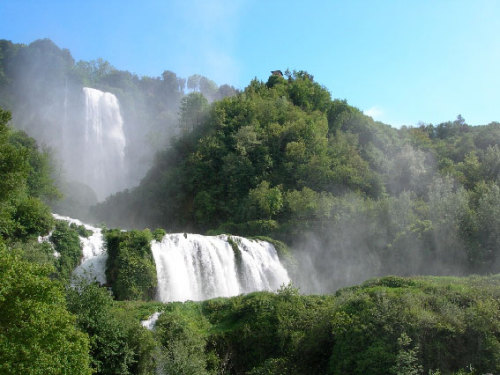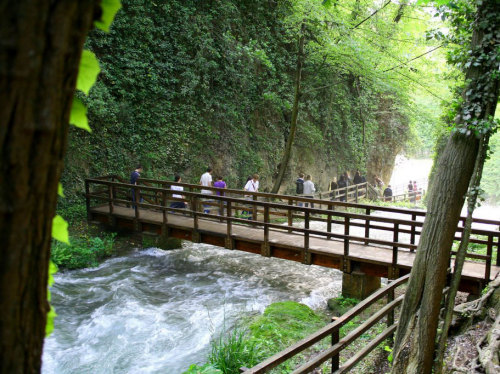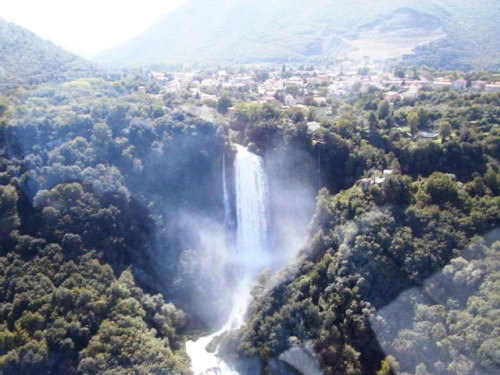Marmore Falls
Velino river runs through much of the plateau surrounding Rieti but further down the valley is found naturally hampered by the presence of massive limestone and the absence of a proper bed to scroll; this particular geological configuration has led, over the ages, the formation, in that section, of a harmful stagnant swamp to the healthiness of the places. In 271 BC, the Roman consul Manlius Curio Dentato ordered the construction of a canal to drain the stagnant water in the direction of natural Marmore leap: from there, the water fell directly the river Nera, a tributary of the Tevere.
With the fall of the Western Roman Empire came to an end the channel maintenance, which led to a decrease in the flow of water and a gradual swamping of the Rieti Valley. After many vicissitudes, in 1422 a new canal was built to restore the original flow of the river (Cavo Reatino or Gregorian Cavo, because of the intervention of Gregory XII).
In the nineteenth century the waters of the falls began to be used for their driving force: in 1896, the Terni Acciaierie fed their mechanisms using 2 cubic meters of water Curiano Cavo. In subsequent years, the cascade began to be intensively exploited for the production of hydroelectric power.
In the nineteenth century the waters of the falls began to be used for their driving force: in 1896, the Terni Acciaierie fed their mechanisms using 2 cubic meters of water Curiano Cavo. In subsequent years, the cascade began to be intensively exploited for the production of hydroelectric power.
A panoramic view of the falls can be admired from the medieval village of Torreorsina, only country in the Valnerina that faces directly on it. Between 1901 and 1960 the town was reachable by tram Terni–Ferentillo, infrastructure created to facilitate the transportation of goods and people along the valley of the Nera that resulted decisive at the time of industrialization thereof.





